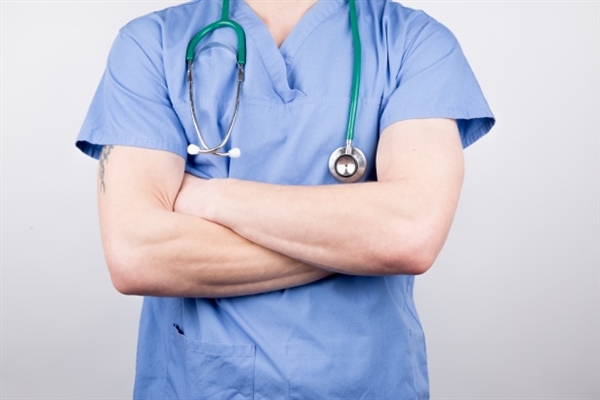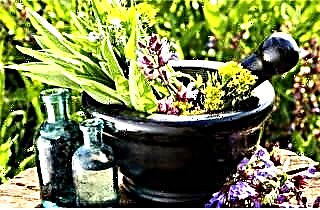Pain in the region of the heart is one of the most common symptoms in patients with a therapeutic profile. The intensity, duration, conditions for the onset of an attack are characteristic signs that determine the possible course and prognosis of pathology. Acute conditions, for example, myocardial infarction, complicated hypertensive crisis, require urgent care, without which there is a high risk of death. Competent emergency measures at the prehospital stage in such cases save a person's life.
Heart pain: what is characteristic for it?
Discomfort or soreness in the chest area can be caused by various diseases, however, cardiac etiology differs in characteristic features:
- Connection with physical activity. Most often, an attack occurs at the height of the intensity of the activity and emotional stress.
- The center of pain is localized in the left half of the chest with irradiation to the lower jaw, scapula, back, left shoulder and arm.
- Vegetative disorders. Strong painful impulses from cardiac receptors causes discoloration of the skin and increases sweating.
- Additional signs: arrhythmia, palpitations, blood pressure lability and others.
Seizures often occur in people whose professions are associated with constant stress: heads of large companies, teachers, educators, doctors, drivers, and many others.
As a rule, pain in the heart area is caused by a violation of the blood supply to the myocardium (the pathogenetic basis of angina pectoris and heart attack) - an acute oxygen deficiency in the tissues leads to the accumulation of decay products and irritation of the corresponding nerve receptors. The process contributes to the death (necrosis) of muscle fibers with irreversible disruption of their functions.
In addition, soreness is a characteristic sign of inflammatory diseases (myocarditis, pericarditis). The pathogenesis of symptoms is associated with a violation of cellular metabolism and the effect of biologically active substances.
How to determine the origin of a symptom?
Pain in the chest area can be a sign of a disease of the lungs, bronchi, pleura, lymph nodes, diaphragm and heart. In addition, there are many pathologies that have an atypical cardialgic course. The adequacy of medical care depends on the timeliness and correctness of the diagnosis.
Typical differences in chest pain in various diseases are presented in the table:
| Diseases | Distinctive characteristics |
|---|---|
| Pleurisy (inflammation of the membrane lining the chest cavity) |
|
| Intercostal neuralgia |
|
| Shingles |
|
| Esophagitis (inflammation of the lining of the esophagus) |
|
| Mediastinitis (inflammation of the mediastinal tissue) |
|
Tuberculosis and lung cancer are accompanied by pain in the chest with a detailed clinical picture of the disease in the later stages. Typical signs: enlarged lymph nodes, weight loss, low-grade fever (up to 38 ° C), hemoptysis and cough. Differential diagnostics should be carried out using additional instrumental and laboratory methods that determine the further algorithm for managing the patient, depending on the stage.
First aid
First aid for heart pain depends on the underlying cause. Most often, an attack occurs against a background of chronic pathology, which relatives know about. The urgency of the condition is determined by:
- intensity - the more pronounced the symptom, the more dangerous the patient's condition;
- irradiation - the spread of pain, typical for myocardial infarction and aortic aneurysm, requires an immediate call for an ambulance and, in the future, surgical intervention;
- blood pressure level (critical high and low values indicate a negative prognosis for the patient);
- the effectiveness of the drugs that the patient was taking as maintenance therapy. For example, the absence of a result from 3 tablets of "Nitroglycerin" most often accompanies acute coronary syndrome.
What to do at home?
The onset of a painful attack in the chest is a frequent occurrence among cardiac patients. Algorithm for providing emergency care at the pre-medical stage, the necessary actions:
- Calm the patient down. Strong feelings, excitement increase the load on the heart and stimulate pain.
- Place the patient on a bed (horizontal position improves blood flow to the heart and reduces the deficit in blood supply). With shortness of breath and shortness of breath - sit down.
- Unbutton the tight collar of the shirt, remove the sweater. The release of airway pressure further calms the patient and provides oxygen access.
- Measure your blood pressure. With high rates (hypertension) at home, you can use mustard plasters or immerse your feet in warm water to improve the situation.
- An attack of acute heart pain that does not stop within 20 minutes most often requires hospitalization.
What medications can be used and in which case?
At home, pharmacological support of the patient is allowed before the arrival of an ambulance. The choice of medication depends on the symptoms present and the underlying pathology of the patient.
Drugs used for pain in the heart:
- "Nitroglycerin" (tablets) - for compressive pain that occurs during physical exertion. Put 1 tablet under the tongue in patients with a diagnosis of myocardial ischemia.
- Aspirin (tablets) is a drug that prevents the formation of blood clots that impair blood flow in the coronary arteries. Take 2 tablets of 150 mg at the clinic of acute myocardial infarction.
- "Corvalol" ("Valocordin", "Valoserdin" - in drops) is a remedy that has a calming effect. Recommended for patients with vegetative-vascular or neurocirculatory dystonia.
- "Pharmadipin" (drops) is a drug for lowering blood pressure (BP). It is recommended for patients who at the time of an attack have blood pressure values above 160/100 mm Hg. Art. in the absence of paroxysm.
Intravenous administration of drugs is allowed only when blood pressure is monitored.
Conclusions
Pain in the region of the heart is a dangerous symptom of various diseases. The correct treatment depends on the underlying cause, so it is extremely important to determine the source of the discomfort during the prehospital phase. Emergency care for cardiac pain consists of non-drug treatments to improve blood flow to the heart and rational pharmacological support. Frequent episodes require the supervision of a cardiologist and the appointment of constant special therapy.



